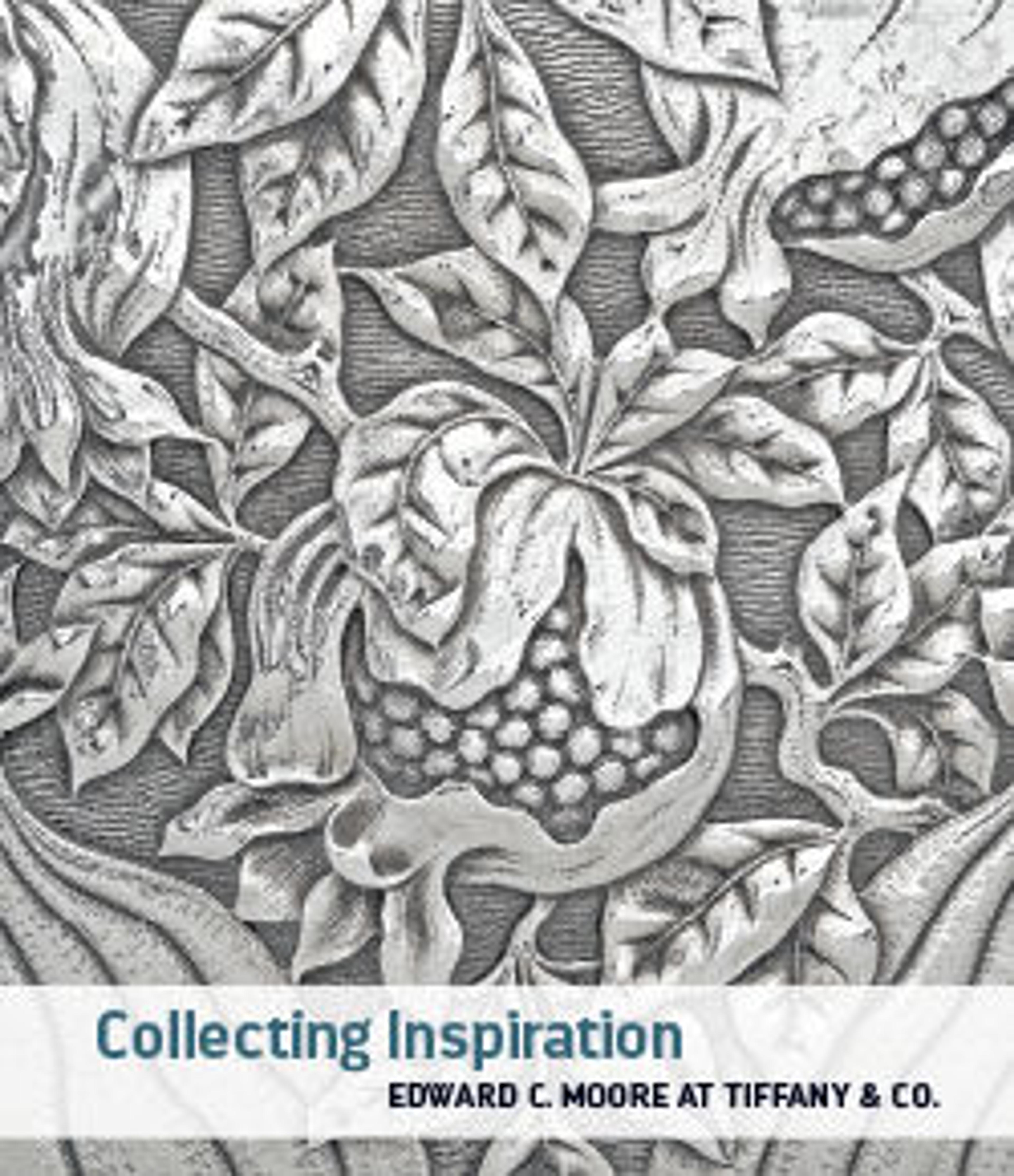Tray
This lively scene, featuring a frog leaping from the water to catch a mosquito in its open mouth, was part of a series of objects created by Tiffany & Co. in a distinctive Japanese style. The imagery, both engraved and rendered in relief, was derived from European print sources depicting the arts of Japan and art objects made in Japan collected by Edward C. Moore, head of the silver division and creative director at Tiffany. For example, the swarm of insects depicted on this tray mirrors a small mosquito printed as a page filler in L'Art Japonais, written by Louis Gonse and published in 1883 in Paris. The copy of this publication held in the Thomas J. Watson Library at the Met was Moore’s personal copy, donated in 1891.
Along with his copy of L’Art Japonais, Moore gave his collection of more than five hundred books and two thousand objects, collected from around the world, to The Metropolitan Museum of Art in 1891. His collection offers ample evidence of his interest in animal imagery, particularly frogs. Indeed, it included many objects depicting frogs and toads, including several small Japanese netsuke (see 91.1.991 and 91.1.1000). Furthermore, live frogs were kept in the silver studio at Tiffany for designers to study. Rendering this frog from life rather than from a print source likely led to its dynamic pose and sense of movement.
The use of multiple metals and mixed-metal alloys to animate both the frog and rising sun were inspired by Japanese metalwork and Moore’s passion for innovative metalworking techniques and virtuosic craftsmanship. Looking closely at the body of the jumping frog, yellow, pink, and silver colored metals have been used together to give the appearance of a lifelike, textured amphibian body. XRF (x-ray fluorescence) analysis was used to identify the metals and exact composition of the alloys used on this tray. This analysis, together with Tiffany’s design drawing for this tray (1987.1047.2) and a surviving technical manual, allows for an understanding of what alloys Tiffany used to render certain colors and the shorthand notation for these mixtures. The rising sun was to be inlaid with "red gold," determined to be a copper-gold alloy, while the frog’s body was to be cast in "Y.M.;" (yellow metal), identified as an alloy of copper and zinc. The designer did not indicate what metal would comprise the pink colored spots along the frog’s body and legs, but analysis revealed them to be an alloy of copper, platinum, and iron, which is similar to "Metal no, 47," which the technical manual also describes as Japanese Gold #2 and "Shakado."
Along with his copy of L’Art Japonais, Moore gave his collection of more than five hundred books and two thousand objects, collected from around the world, to The Metropolitan Museum of Art in 1891. His collection offers ample evidence of his interest in animal imagery, particularly frogs. Indeed, it included many objects depicting frogs and toads, including several small Japanese netsuke (see 91.1.991 and 91.1.1000). Furthermore, live frogs were kept in the silver studio at Tiffany for designers to study. Rendering this frog from life rather than from a print source likely led to its dynamic pose and sense of movement.
The use of multiple metals and mixed-metal alloys to animate both the frog and rising sun were inspired by Japanese metalwork and Moore’s passion for innovative metalworking techniques and virtuosic craftsmanship. Looking closely at the body of the jumping frog, yellow, pink, and silver colored metals have been used together to give the appearance of a lifelike, textured amphibian body. XRF (x-ray fluorescence) analysis was used to identify the metals and exact composition of the alloys used on this tray. This analysis, together with Tiffany’s design drawing for this tray (1987.1047.2) and a surviving technical manual, allows for an understanding of what alloys Tiffany used to render certain colors and the shorthand notation for these mixtures. The rising sun was to be inlaid with "red gold," determined to be a copper-gold alloy, while the frog’s body was to be cast in "Y.M.;" (yellow metal), identified as an alloy of copper and zinc. The designer did not indicate what metal would comprise the pink colored spots along the frog’s body and legs, but analysis revealed them to be an alloy of copper, platinum, and iron, which is similar to "Metal no, 47," which the technical manual also describes as Japanese Gold #2 and "Shakado."
Artwork Details
- Title: Tray
- Maker: Tiffany & Co. (1837–present)
- Date: 1879–80
- Geography: Made in New York, New York, United States
- Culture: American
- Medium: Silver, copper, brass, gold-copper alloy, and copper-platinum-iron alloy
- Dimensions: 9 1/8 × 7/8 in., 544.3g (23.2 × 2.2 cm, 17.5 oz.)
- Credit Line: Rogers Fund, 1966
- Object Number: 66.52.2
- Curatorial Department: The American Wing
More Artwork
Research Resources
The Met provides unparalleled resources for research and welcomes an international community of students and scholars. The Met's Open Access API is where creators and researchers can connect to the The Met collection. Open Access data and public domain images are available for unrestricted commercial and noncommercial use without permission or fee.
To request images under copyright and other restrictions, please use this Image Request form.
Feedback
We continue to research and examine historical and cultural context for objects in The Met collection. If you have comments or questions about this object record, please contact us using the form below. The Museum looks forward to receiving your comments.
